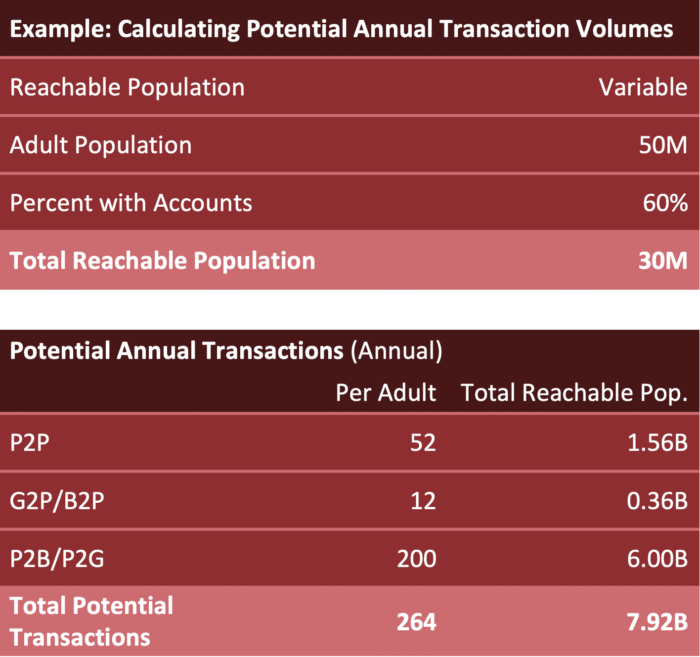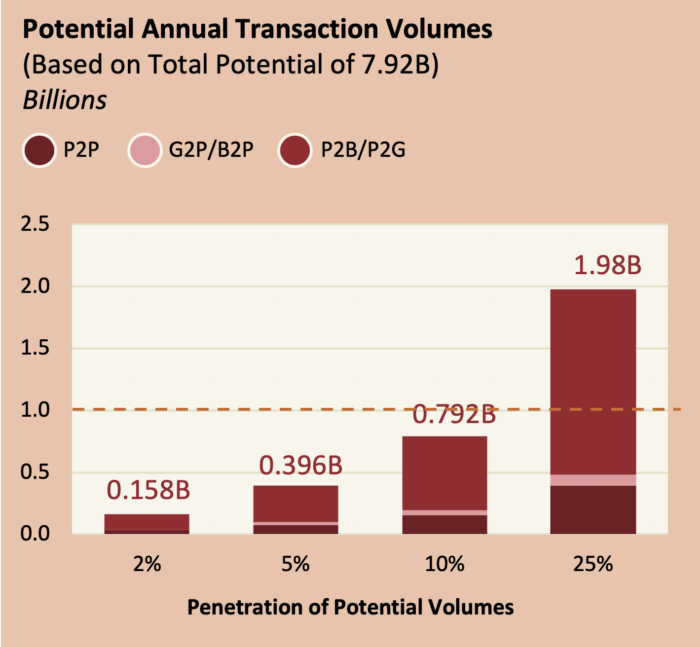Are Volumes High Enough?
Previous research into payment systems worldwide has established a firm relationship between payment system volumes and unit costs at the hub or switch. Keeping these unit costs ultra-low is a core precept of the Level One Project. Without these low costs, DFSPs will not be able to provide payment services to their customers at prices low enough to enable usage and scale.
Research indicates that a transaction volume of approximately 1 billion per year may be a critical cut-off point to reach low unit costs. The Level One Project team believes this is feasible: if the system operator charges the participating DFSPs a processing cost in the range of US$ 0.005 per transaction, this would provide roughly US$5MM per year to cover the “hub” costs of operating the system.
A key question is whether or not a given country or market has the potential to reach volumes sufficient to drive unit costs down to desired levels.
In considering this question, a market would want to consider:
- The total adult population
- The percentage of the population that has a transaction account
- The use cases supported by the payment system, and the approximate number of total payments (cash and digital) made by adults for each of these use cases – this represents the potential transactions for the payment system
- Estimate proportion of the transactions that will be digital vs cash, by use case
An example of such a calculation is shown below. Although each market may be different, most analyses show that enabling P2B (merchant and biller) payments is critical to achieve volume.
Note: In some situations, it may be easier to reach target volumes with a regional approach. This can either be a regional payment system, or regional processing of separate national systems.


Next Topic in this Section: Are Multiple Use Cases Supported?
